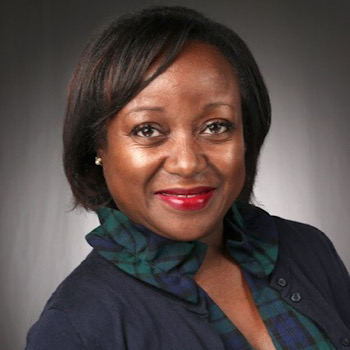Wendy John, Head of Global Diversity and Inclusion at Fidelity Investments, says she had a nontraditional path to her diversity, equity, and inclusion (DEI) leadership role. Those who have followed along with our series, however, are probably well aware there really isn’t a “traditional” path to such roles for most of the executives who hold them. Rather than starting a career in a junior HR or diversity role, most of the leaders we speak to got their start in a completely different corporate function and only discovered their passion and aptitude for DEI work after being exposed to it—or the lack of it—while on the job.
John’s Long, Successful Career with Fidelity
John started her career as an actuarial analyst at a large global consulting firm before joining Fidelity Investments as an actuarial technician in 1997. Over the past 25 years, she’s served in a variety of key leadership roles in the company, from relationship management to client services and operations to global workforce strategy, program management, implementation, and benefits consulting. Before taking on her current role as head of global diversity and inclusion, she served as the chief administrative officer (CAO) of Fidelity Charitable.
It was during her time at Fidelity that John first got her feet wet in the DEI space, helping to create one of the company’s first affinity groups. “Decades ago, I helped organize a small group of Black leaders at Fidelity to promote mentorship, professional development and provide a sense of community in the workplace,” she recalls. “That group later evolved into Aspire, Fidelity’s Affinity Group for Black and Latinx employees.” Today, Fidelity has 10 Affinity Groups with more than 28,000 global members spanning multiple communities and interests.
“I’m a strong believer in helping as much as I can, and I’ve always rooted for the success of others,” John says. “I personally understand the importance of feeling safe and comfortable in the workplace and have worked hard over the years to create safe, inclusive, and relatable spaces for myself and those around me. My current role really is a more formal and strategic way to amplify the work I was already doing at scale.”
Growing Up with Diversity
John attributes much of her affinity for DEI work to her upbringing in the culturally diverse Caribbean island nation of Trinidad and Tobago, “where celebrating and embracing various cultural, musical and religious experiences was quite natural,” she says. In addition, John believes her analytical mindset and the way she approaches understanding the world lend themselves to the work of DEI. “I am also a social scientist at heart,” she says. “As a reflective and analytical person, I have often thought about how we can improve the experiences that we as a company create for our associates, our customers and the communities we serve.”
Elevating DEI to a Corporate Function in the Wake of National Discourse on DEI
While someone held a DEI leadership role at Fidelity for over 10 years, the company’s approach to DEI changed significantly over the last couple of years as a national discourse of structural racism, police brutality, and racial disparities was in full force.
“Coincidentally, I started this role in the summer of 2020 when many organizations were reflecting on their role in supporting historically underserved communities,” John says. “Understanding the criticality of the work, our senior leadership team elevated the D&I Office to a corporate, function alongside Human Resources versus within, which is the more traditional model. This was an intentional way to signal to the organization that the accountability for our collective progress spanned across all associates and leaders, and it has been integral to our ability to integrate efforts across our many businesses.”
Pulling Back the Curtain
Racial, gender, and other disparities thrive in darkness, and one of the first steps for any successful DEI program is often getting a clear picture of the company’s current and historic track record on DEI. That can be a painful but necessary form of introspection.
“In the spring of 2021, we published our inaugural Diversity & Inclusion report which shared a look at our workforce demographics and summarized the work we were doing to recruit and develop historically underrepresented employees,” says John. “As a private company, Fidelity had not previously shared those details. So, pulling back the curtain and allowing people, internally and externally, to take a look inside was a big step, and we knew it could lead to uncomfortable conversations and realizations.” But, she adds, Fidelity also knew that transparency was critical if the company was going to truly make progress. That spirit of transparency has continued, she says. The company issued their second D&I report this past spring, providing an update on workforce demographics and programs.
The Importance of Humility
Pulling back the curtain on a company’s DEI status can be painful, but DEI leaders need to understand that it’s an ongoing, continuous process. Given the relative infancy of DEI as a corporate function, few companies can claim to have no room for improvement in the DEI context.
“Diversity and inclusion begins with an open mind, genuine curiosity in others and a willingness to learn new things, while discarding old beliefs,” John continues. “That means you must have the humility to admit what you don’t know something or had a partial understanding, as well as a desire to grow. Walking humbly in this space means you’re committed to continual learning—from your own lived experiences and the lived experiences of others.”
DEI work, says John, is work that requires planning, time, focus, partnership, patience, and persistence. That work is underway, she says, “it’s a path we are traveling at Fidelity and we believe it’s worth the effort.”
Lin Grensing-Pophal is a Contributing Editor at HR Daily Advisor.

